Shopping for a used SUV under $30,000 in 2025 doesn’t mean you have to settle for less. In fact, today’s pre-owned market is packed with vehicles that offer incredible value, dependability, and features that rival brand-new models. Shoppers searching for rugged capability, refined comfort, family-focused practicality, or all three can find plenty of standout options worth every penny.
But not all used SUVs are created equal; some deliver exceptional reliability and safety, while others come loaded with tech and low ownership costs.
To help you make the smartest choice, we’ve ranked the top 10 used SUVs under $30,000 using ten critical criteria that range from long-term durability to resale value. These are the models that hit the sweet spot of price and performance—and will keep you happy long after you’ve driven off the lot.
1. 2019–2021 Toyota RAV4
- Why it ranks #1: The RAV4 offers bulletproof reliability, great fuel economy, strong resale value, and top-tier safety ratings. The hybrid model adds extra MPG.
- Key specs: 2.5L I4 / Hybrid, up to 41 MPG (Hybrid)
- Strengths: Reliability, fuel efficiency, advanced safety tech, low cost of ownership
- Price range: $22,000–$29,000
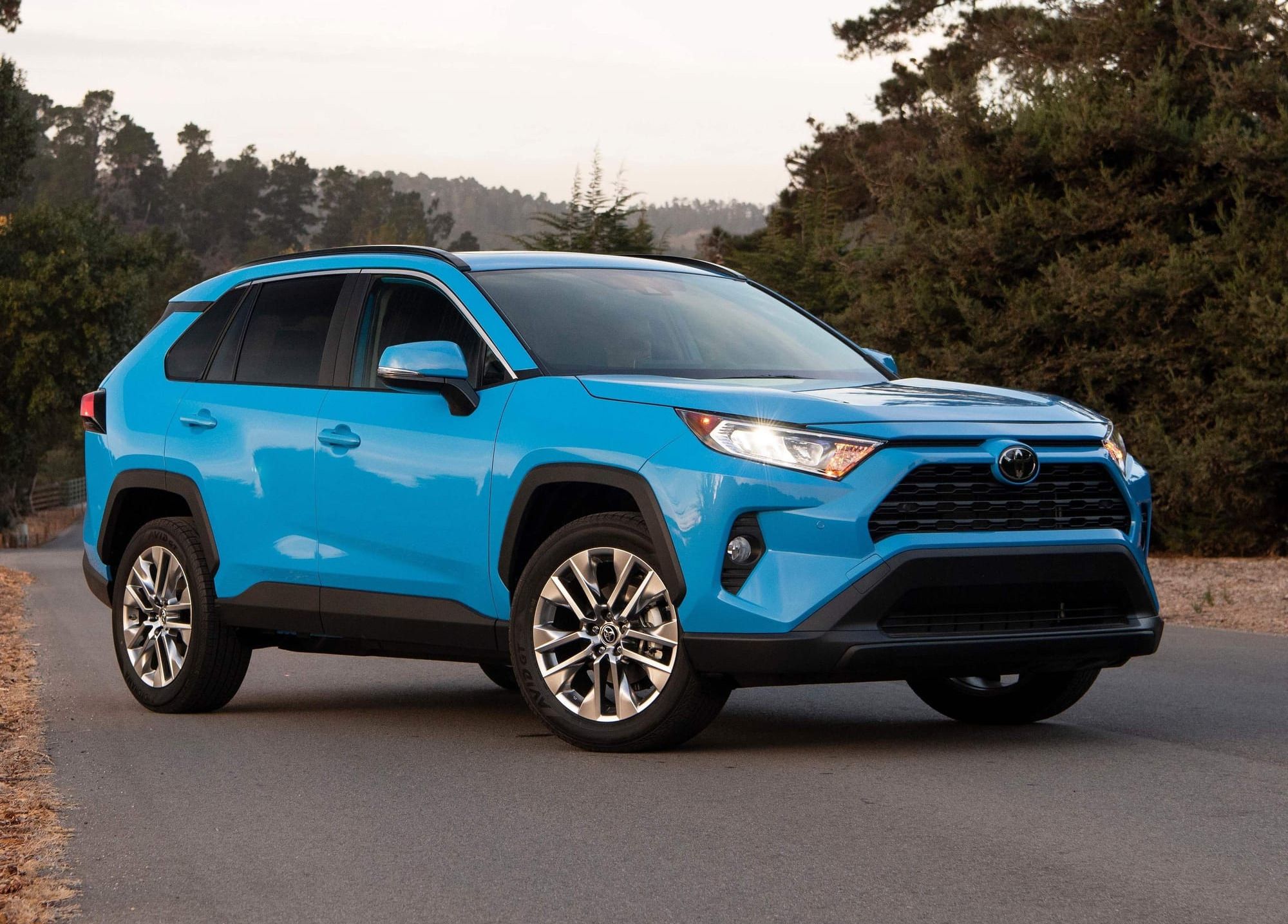
2019 RAV4.
Here is the best used SUV under $30k that money can buy. The Toyota RAV4 earns its top spot by excelling in nearly every category that matters to used SUV buyers. It’s one of the most reliable vehicles in its class, backed by consistently high scores from Consumer Reports and J.D. Power.
The 2019–2021 models offer excellent fuel economy, especially in the hybrid variant, while still delivering a comfortable ride and practical cargo space. Advanced safety features come standard, and the interior strikes a solid balance between durability and modern tech.
With low ownership costs, exceptional resale value, and Toyota’s reputation for longevity, the RAV4 is a smart, worry-free investment for under $30,000 used suvs.
2. 2019–2021 Honda CR-V
- Why it’s top-tier: It combines a refined ride, spacious interior, and excellent reliability. Turbocharged models offer punchy performance.
- Key specs: 1.5L turbocharged I4, CVT, FWD/AWD
- Strengths: Safety, reliability, comfort, fuel economy
- Price range: $21,000–$28,000
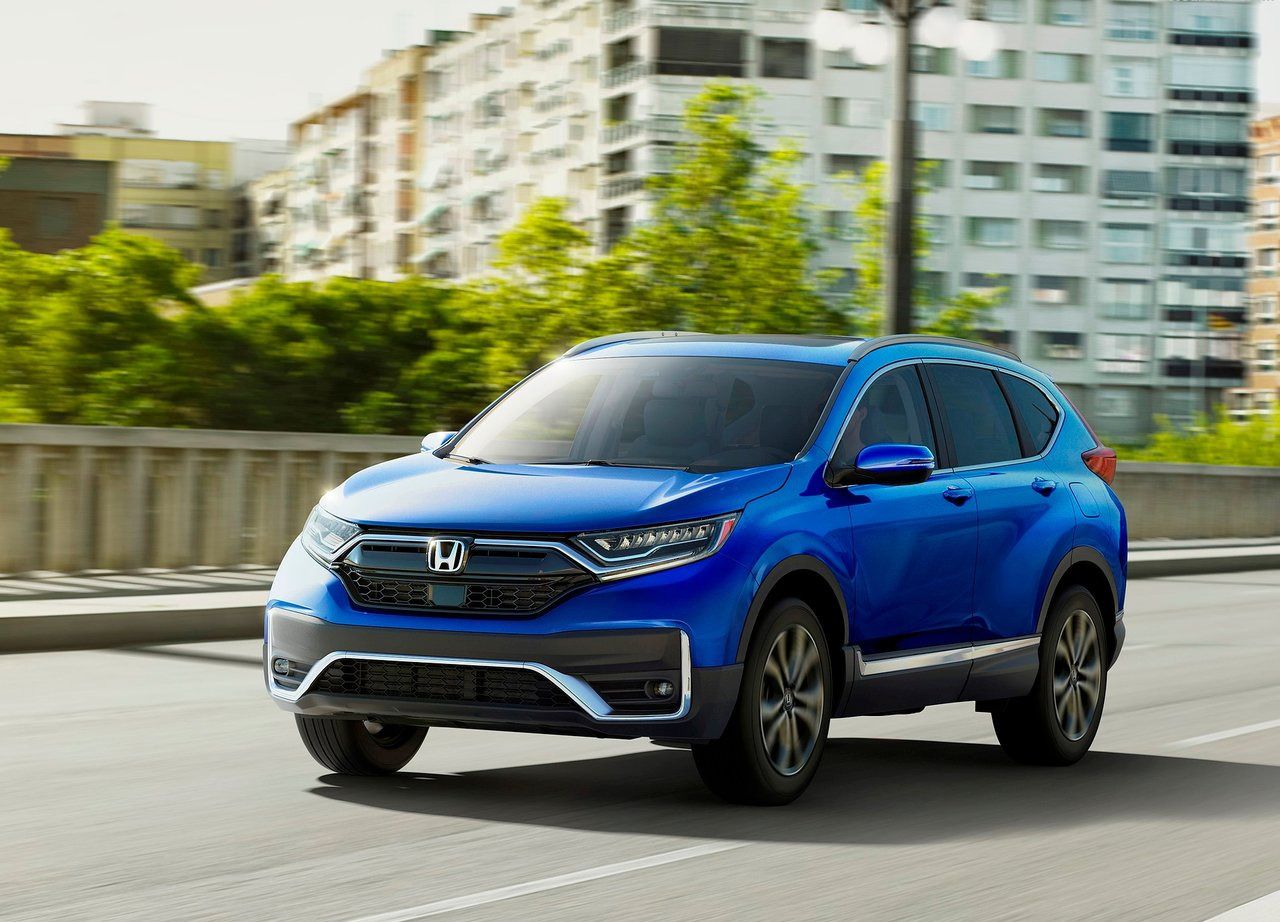
2020 CR-V.
The Honda CR-V stands out as one of the most well-rounded used SUVs available under $30,000. Models from 2019 to 2021 offer a refined driving experience, generous interior space, and impressive fuel efficiency thanks to the turbocharged engine.
Honda’s track record for reliability ensures peace of mind, while standard safety features like Honda Sensing add an extra layer of protection. The CR-V also boasts a spacious rear seat, and a cargo area of 75.8 cubic feet with the rear seats folded down, translating to an deal under-$30k used SUV for families and solo commuters.
With low maintenance costs, strong resale value, and a comfortable, no-nonsense cabin, the CR-V delivers real-world practicality and long-term value.
3. 2018–2020 Lexus RX 350
- Why it's a standout: It’s a luxury SUV with Toyota’s legendary reliability. You get premium comfort and a quiet ride with long-term durability.
- Key specs: 3.5L V6, FWD/AWD
- Strengths: Luxury interior, build quality, resale value, low maintenance
- Price range: $26,000–$30,000
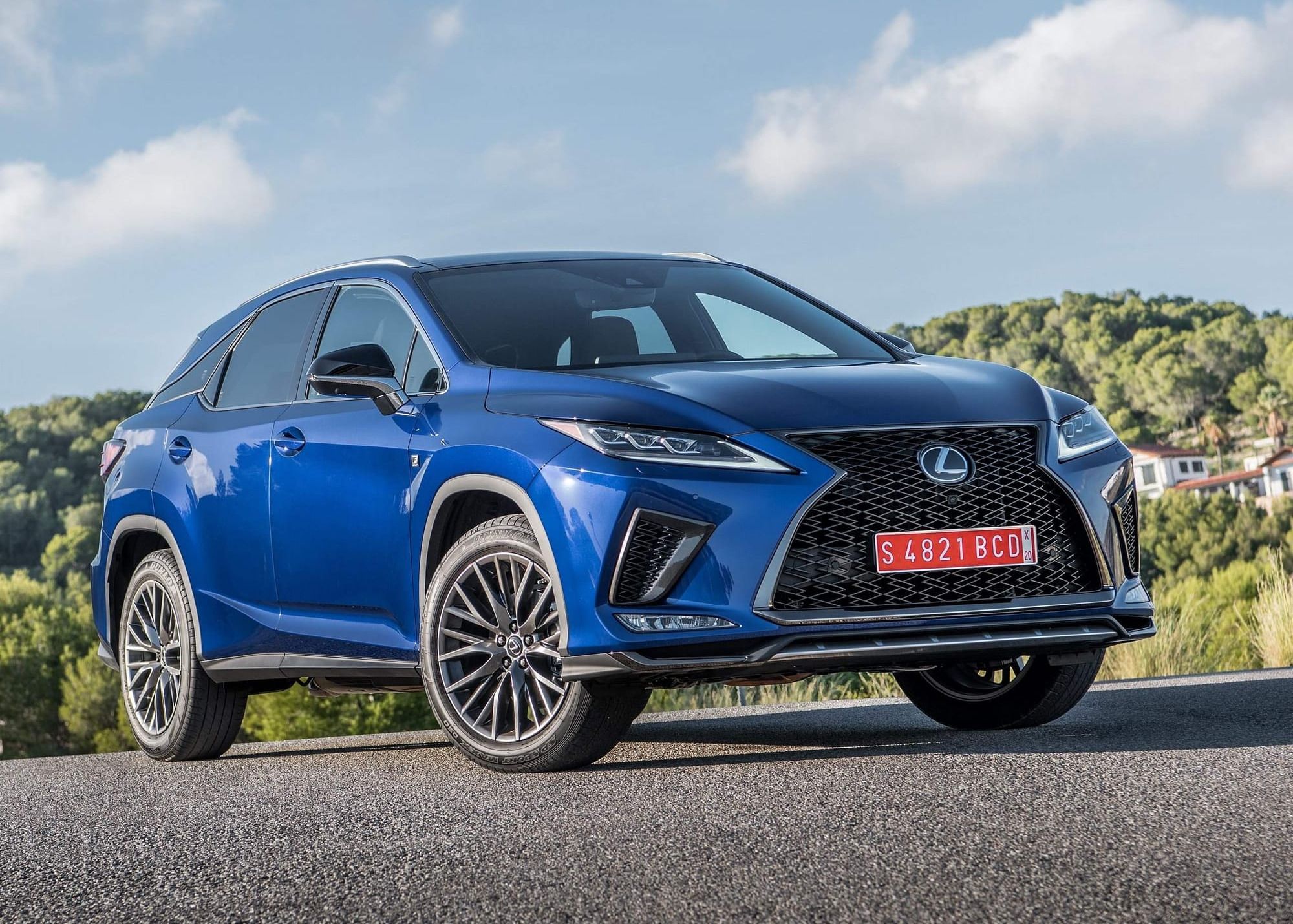
2020 RX.
The Lexus RX 350 is the benchmark for affordable luxury in the used SUV market. Models from 2018 to 2020 offer a plush, quiet ride backed by Toyota’s legendary reliability. Its 3.5-liter V6 engine delivers smooth, confident performance without sacrificing long-term durability.
The interior features high-end materials, supportive seating, and user-friendly technology that make every drive feel upscale.
Unlike many luxury SUVs, the RX 350 is known for low maintenance costs and strong resale value, making it an economical choice for buyers who want premium quality without the premium headaches. It’s a refined, dependable SUV that easily justifies its price tag.
4. 2020–2021 Mazda CX-5
- Why it deserves praise: The CX-5 delivers upscale styling, athletic handling, and a premium interior that feels pricier than it is.
- Key specs: 2.5L I4 or Turbo, AWD available
- Strengths: Driving dynamics, comfort, reliability
- Price range: $23,000–$29,000
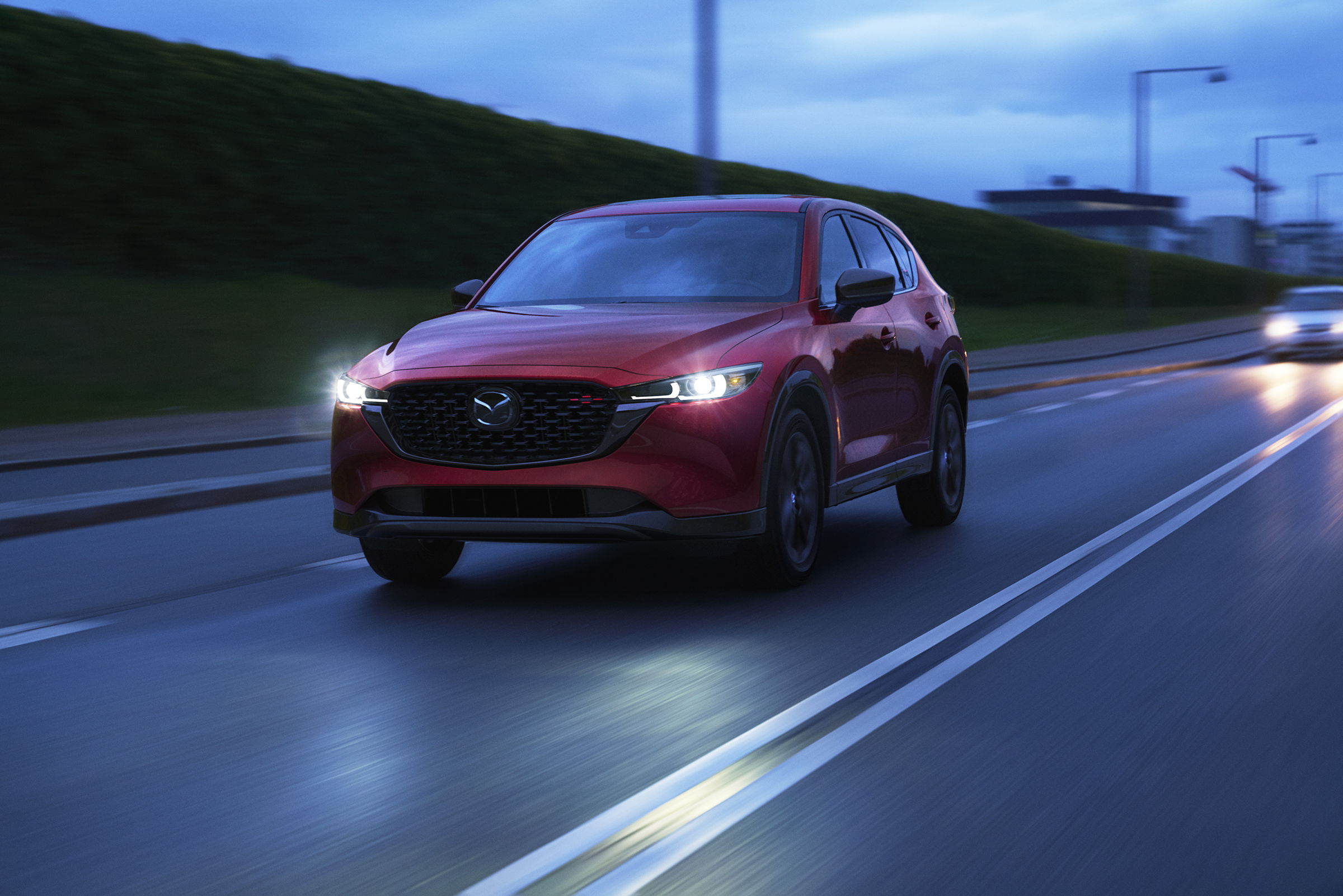
2020 CX-5.
The Mazda CX-5 is a rare gem in the used SUV world, blending upscale design, sharp handling, and long-term reliability at a price well under $30,000. Models from 2020 to 2021 offer a near-luxury interior with premium materials and intuitive tech that rivals more expensive competitors.
Its responsive steering and agile chassis make it genuinely fun to drive, especially with the available turbocharged engine.
Despite its sporty character, the CX-5 remains practical, with solid fuel economy, ample safety features, and a quiet, comfortable cabin. For buyers seeking style, performance, and value in one refined package, the CX-5 is hard to beat.
5. 2020–2022 Subaru Outback
- Why it makes the cut: It's one of the most versatile used SUVs with standard AWD, great ground clearance, and a reputation for long-term durability.
- Key specs: 2.5L I4 or 2.4L Turbo, CVT
- Strengths: AWD, practicality, safety ratings
- Price range: $23,000–$30,000
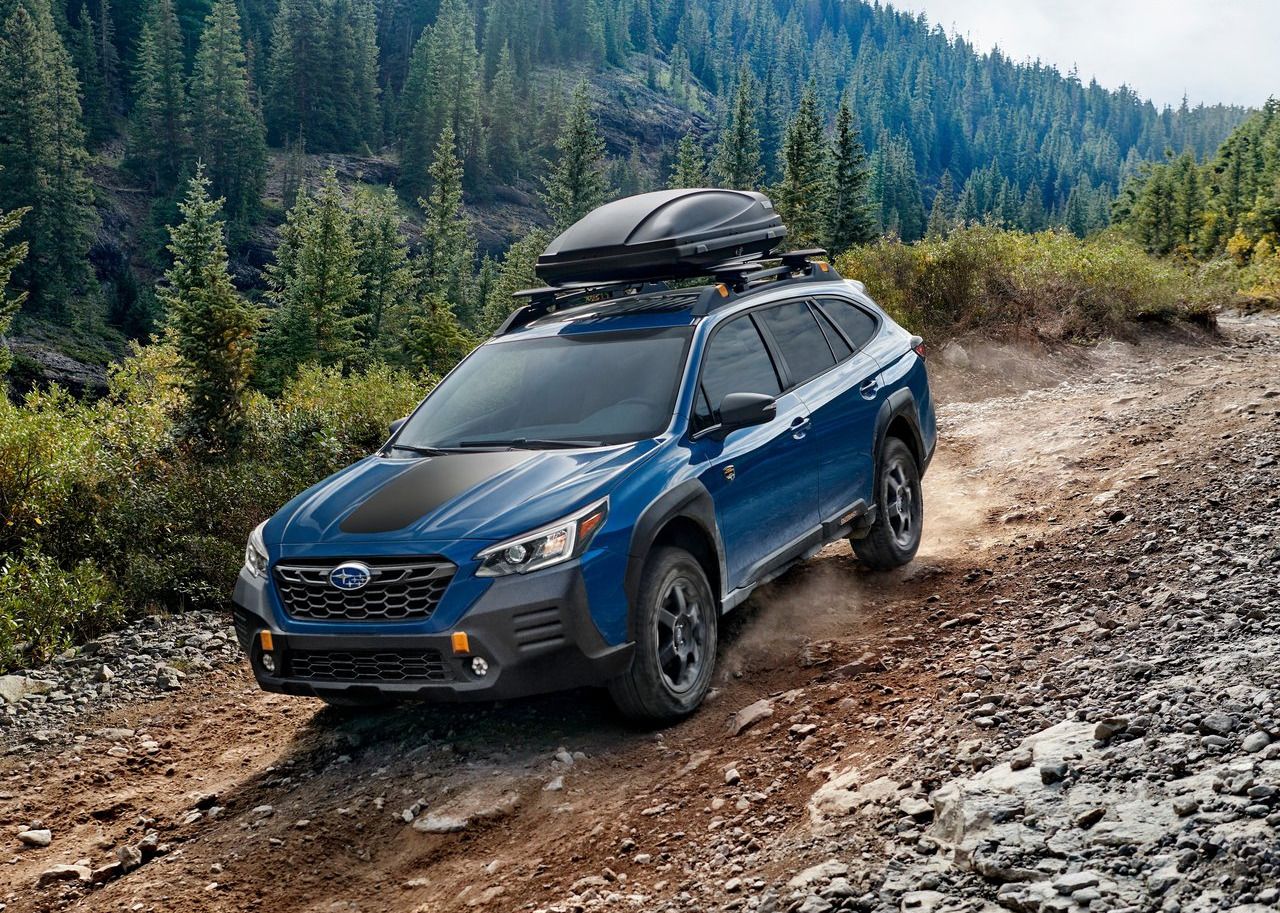
2022 Outback Wilderness.
The Subaru Outback is a top-tier choice for used SUV shoppers who value versatility, safety, and all-weather capability. Models from 2020 to 2022 offer standard all-wheel drive, generous ground clearance, and rugged durability, making them perfect for both daily driving and weekend adventures.
The interior is spacious and thoughtfully designed, with a user-friendly infotainment system and available features like heated seats and a large touchscreen.
Subaru’s EyeSight safety suite adds advanced driver aids as standard, boosting peace of mind. With a strong reputation for reliability and practicality, the Outback delivers long-term value and confident performance in any condition.
6. 2019–2021 Hyundai Santa Fe
- Why it's a value pick: Modern styling, solid safety features, and a great warranty make it a smart buy for families on a budget.
- Key specs: 2.4L I4 or 2.0L turbo, FWD/AWD
- Strengths: Feature-rich, affordable, good reliability post-2019 redesign
- Price range: $20,000–$27,000
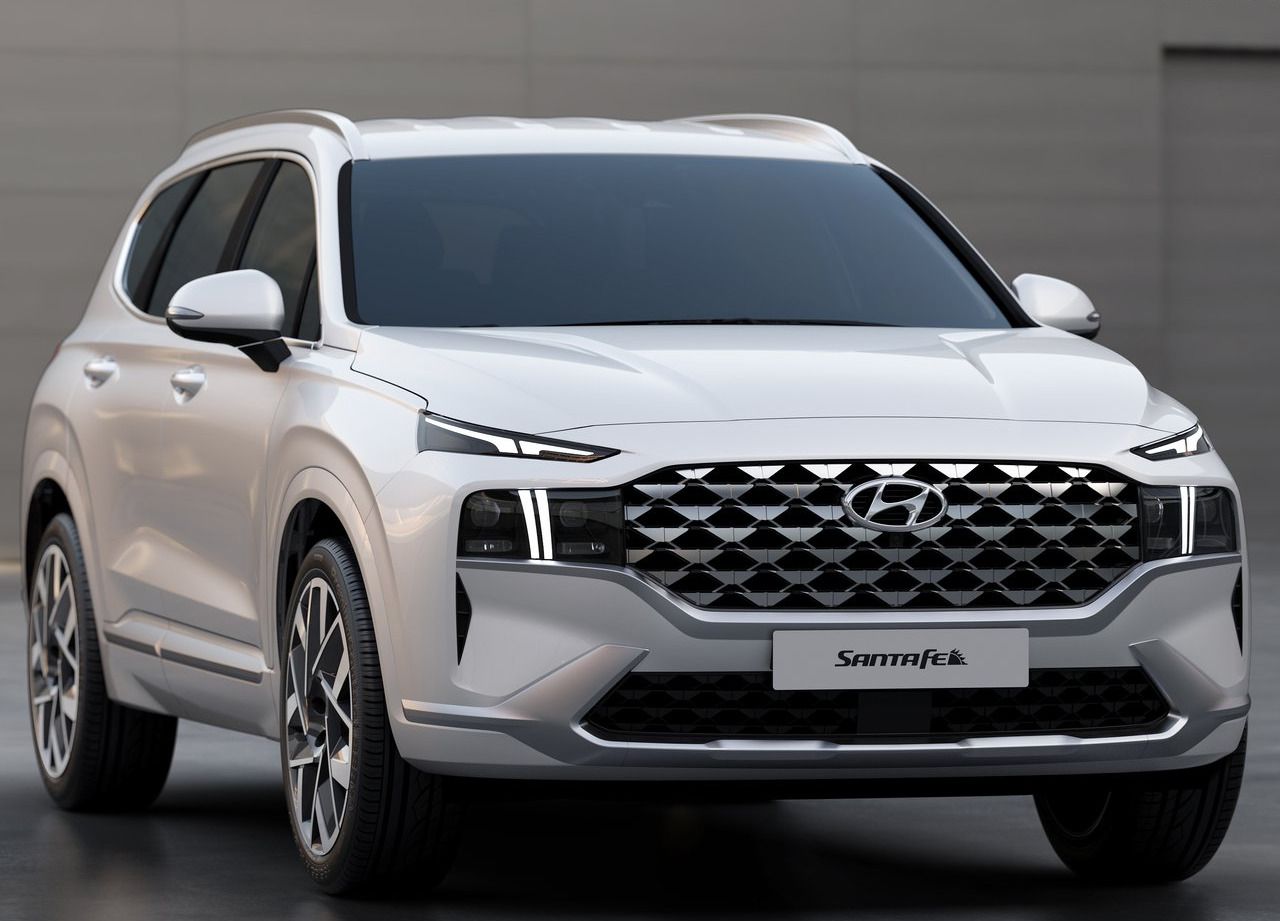
2021 Santa Fe.
The Hyundai Santa Fe provides exceptional value in the used-SUV segment, offering a compelling mix of modern styling, family-friendly features, and long-term reliability—all without breaking the budget.
Especially models from 2019 to 2021 benefit from a full redesign, bringing advanced driver-assist technologies, a refined interior, and a smooth, composed ride. Its comfortable seating and spacious cabin make road trips easier, while the available turbocharged engine adds a nice performance boost.
Hyundai’s reputation for quality control and strong post-warranty reliability keeps maintenance costs manageable. With resale value holding steady, the Santa Fe strikes a rare balance of affordability, comfort, and peace of mind.
7. 2020–2021 Ford Edge
- Why it’s a solid choice: Mid-size space and strong turbocharged engines make the Edge a surprisingly fun and comfortable option.
- Key specs: 2.0L turbo I4 or 2.7L V6 (ST), AWD
- Strengths: Roomy interior, tech features, powerful engine options
- Price range: $23,000–$29,000
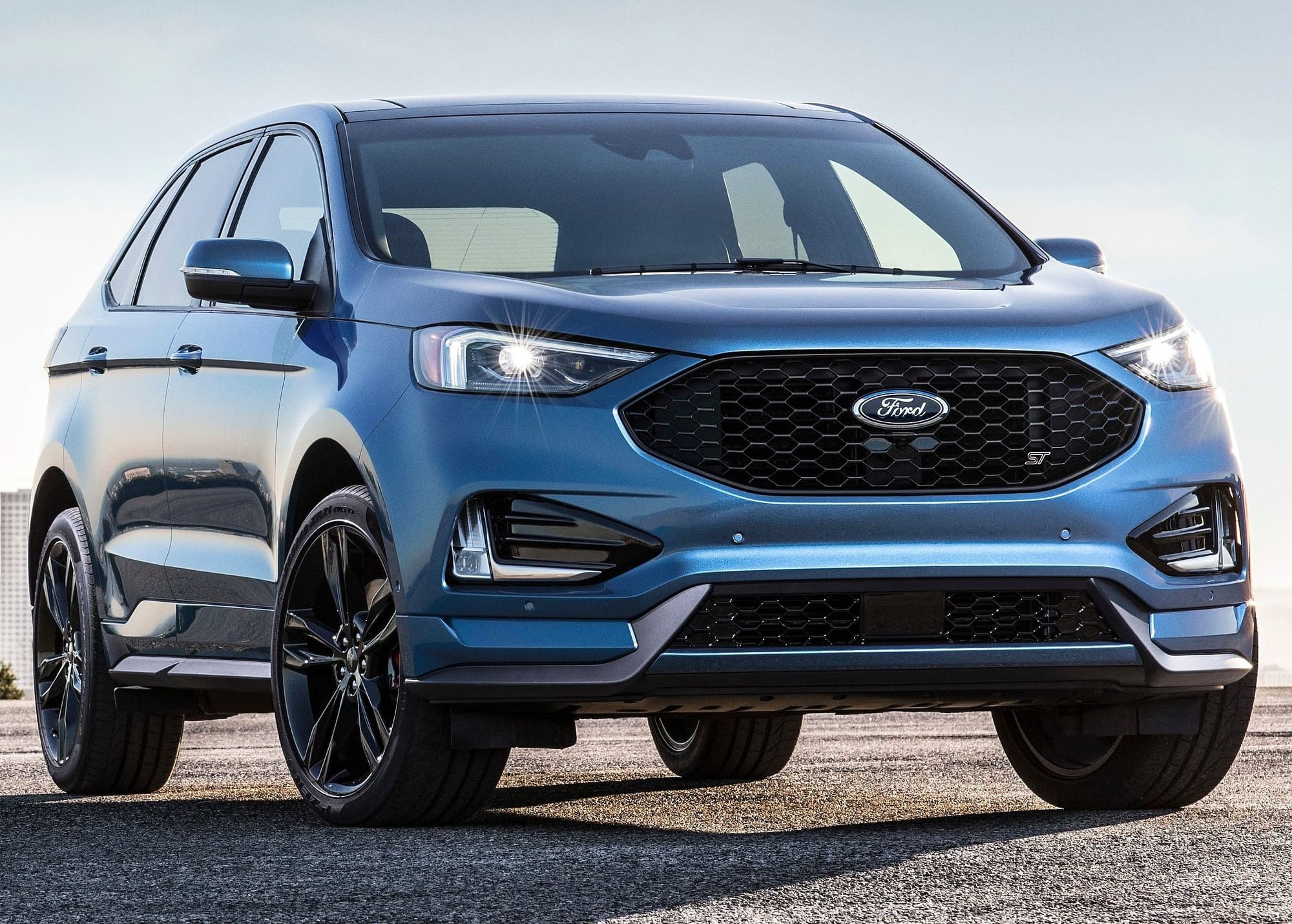
2019 Edge ST.
The Ford Edge delivers a compelling mix of spacious practicality and engaging performance for under $30,000 in the used SUV market. Models from 2020 to 2021 offer a roomy cabin with generous rear legroom and convenient technology, including Ford’s user-friendly infotainment system and driver‑assist features.
The standard 2.0L turbocharged engine strikes a satisfying balance between power and efficiency, while the optional performance-oriented ST trim delivers spirited acceleration without sacrificing comfort.
Maintenance costs are reasonable compared to luxury alternatives, and pre‑owned Edge models tend to hold their value well. For buyers seeking a versatile, confident, and stylish crossover, the Edge checks all the boxes.
8. 2020–2022 Kia Sportage
- Why it earns a spot: Excellent warranty, value-packed features, and modern styling make this compact SUV a dependable choice under budget.
- Key specs: 2.4L I4 or 2.0L turbo, FWD/AWD
- Strengths: Warranty, user-friendly tech, reasonable maintenance
- Price range: $20,000–$27,000
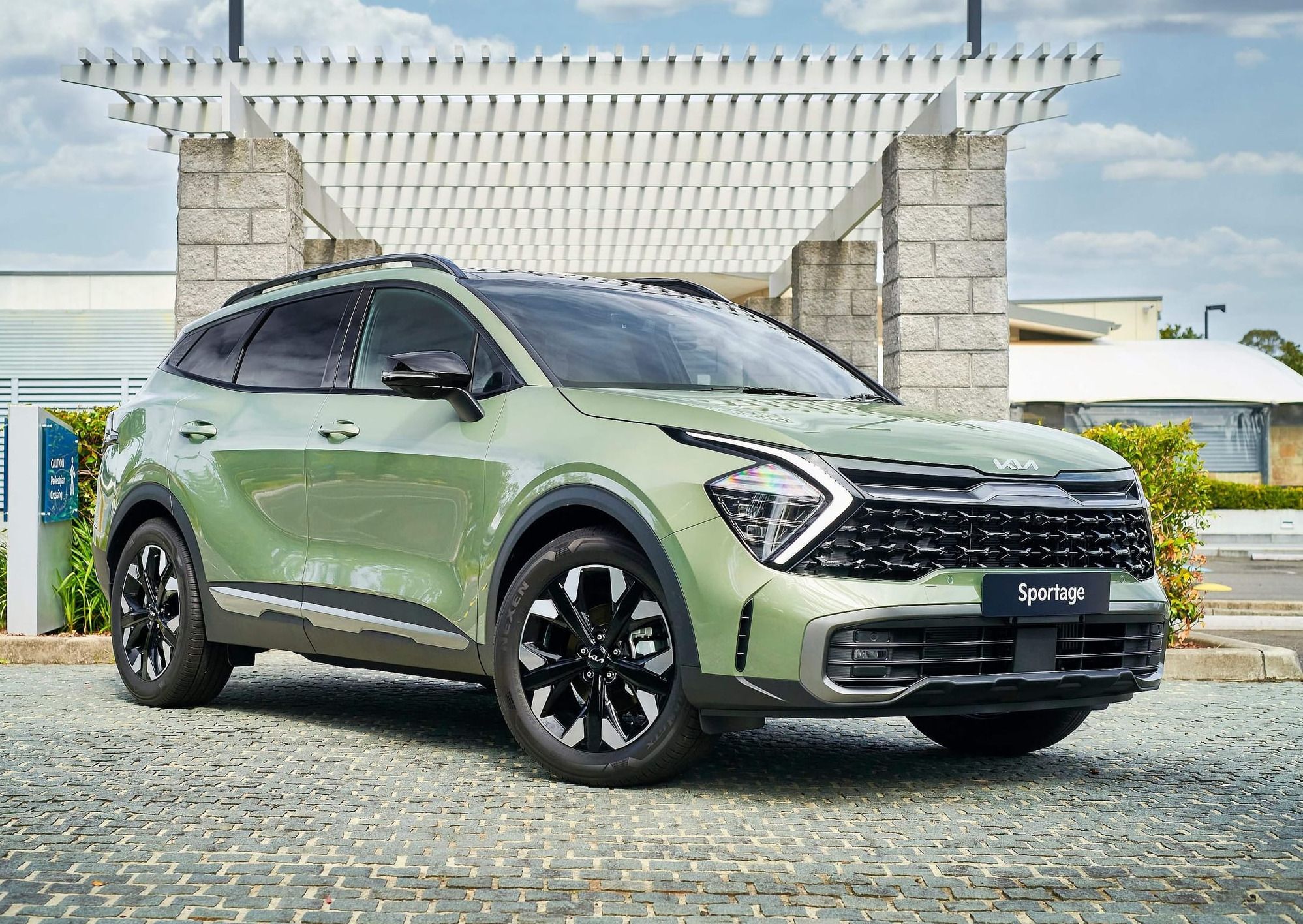
2022 Sportage.
The Kia Sportage is a special one in the sub‑$30,000 used SUV market, thanks to its harmonious blend of style, features, and long‑term value. Models from 2020 to 2022 benefit from a bold redesign that introduces a modern, eye‑catching exterior and a well‑appointed cabin brimming with user‑friendly tech.
It delivers a smooth, comfortable ride and peppy performance, particularly with the available turbocharged engine. Standard safety systems—like forward collision warning and lane-keeping assist—provide added peace of mind.
With Kia’s excellent track record for build quality and a reputation for keeping maintenance costs low, the Sportage is a smart, practical choice for buyers seeking a reliable and stylish SUV that won’t break the bank.
9. 2017–2019 Acura RDX
- Why it stands out: Combines luxury comfort and Honda reliability in a compact luxury SUV package. The SH-AWD system boosts confidence in all weather.
- Key specs: 3.5L V6, FWD or SH-AWD
- Strengths: Strong V6 engine, upscale cabin, durable components
- Price range: $22,000–$28,000
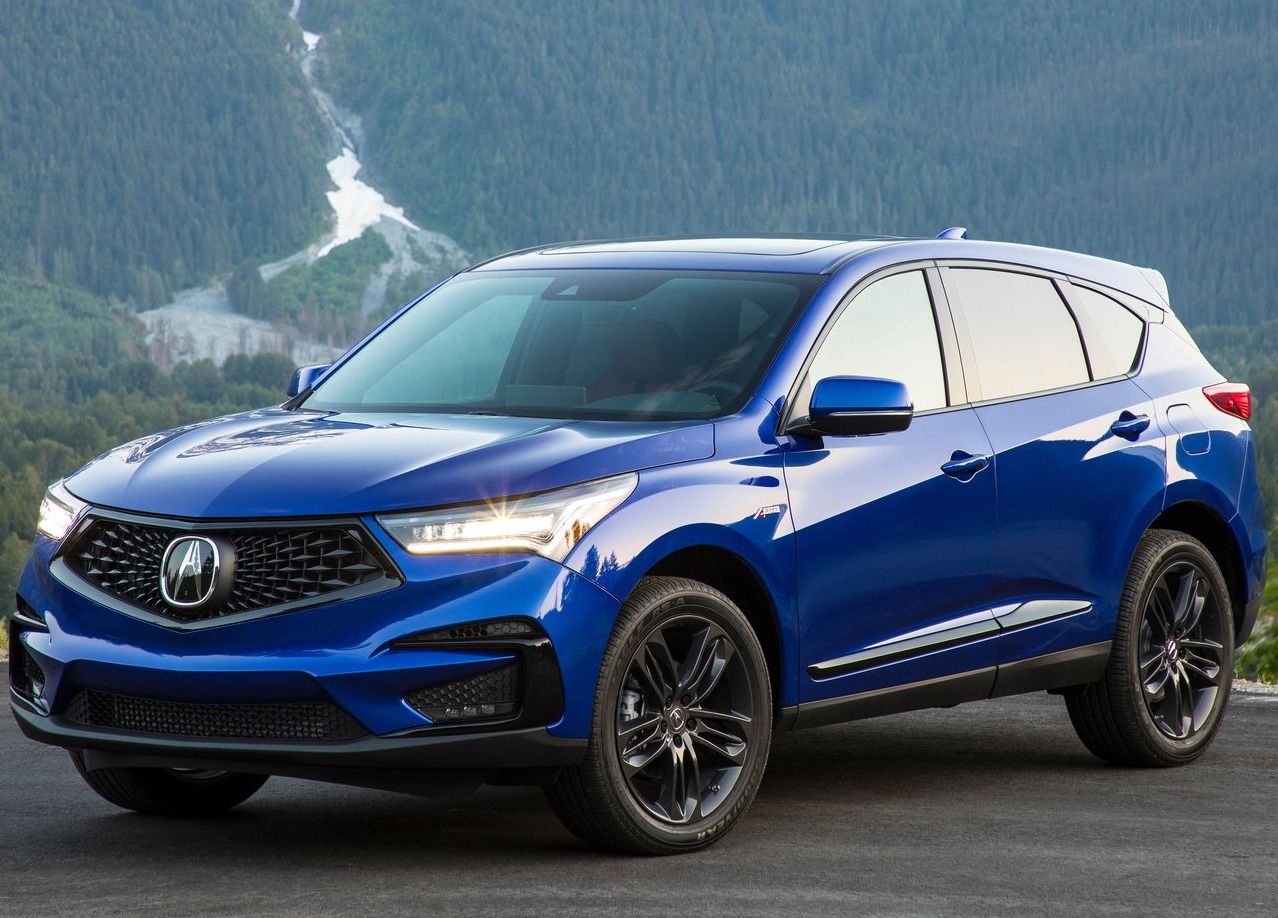
2019 RDX.
The Acura RDX blends luxury, performance, and durability in a package ideally suited to the used‑SUV market. Models from 2017 to 2019 benefit from a robust 3.5‑liter V6 engine and Honda‑derived engineering, delivering spirited acceleration and a composed ride.
Its stylish cabin features upscale materials and intuitive infotainment that creates a refined feel without overcomplicated technology.
The RDX’s Super Handling All‑Wheel Drive (SH‑AWD) system boosts confidence in varied road conditions, while Acura’s reputation for longevity ensures it remains dependable and low‑maintenance. With strong resale value and a premium edge at a reasonable price, the RDX stands out as a smart, refined choice.
10. 2018–2020 Chevrolet Traverse
- Why it’s on the list: One of the few affordable used SUVs with true 3-row seating and solid power. Post-2018 redesign improved reliability and style.
- Key specs: 3.6L V6, FWD/AWD
- Strengths: Family-hauling space, towing, V6 power
- Price range: $23,000–$30,000
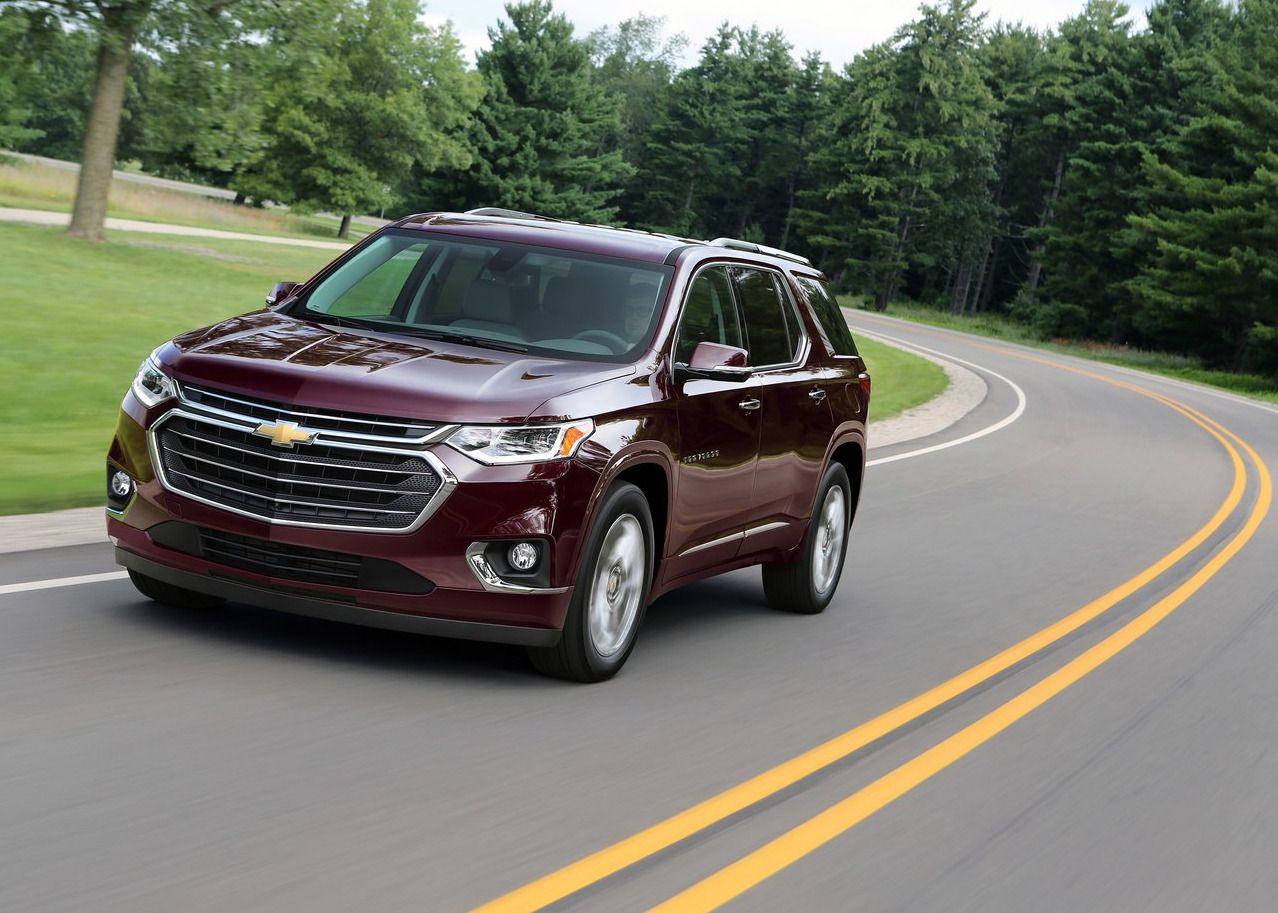
2018 Traverse.
The Chevrolet Traverse stands out among used SUVs under $30,000 by offering true three-row seating and genuine family-minded versatility. The post‑2018 redesign brought improved build quality, a more refined ride, and a powerful 3.6-liter V6 that delivers smooth acceleration and confident highway passing.
Its spacious 157.3 cubic feet interior—roomy enough for adults in the rear seats—and generous cargo capacity make it ideal for daily errands, school runs, or long road trips.
While not as fuel-efficient as compact rivals, the Traverse compensates with solid reliability and straightforward maintenance. For those needing space and comfort without entering full-size SUV territory, the Traverse delivers impressive functionality at a smart price.
Honorable Mentions
Toyota Highlander (2017–2019)
Just above $30K for newer trims but excellent reliability and 3-row utility.
Nissan Rogue (2020–2022)
Improved after full redesign in 2021.
Volkswagen Tiguan (2020–2022)
Great tech and optional third row, but less reliable than others on this list.
---------------------
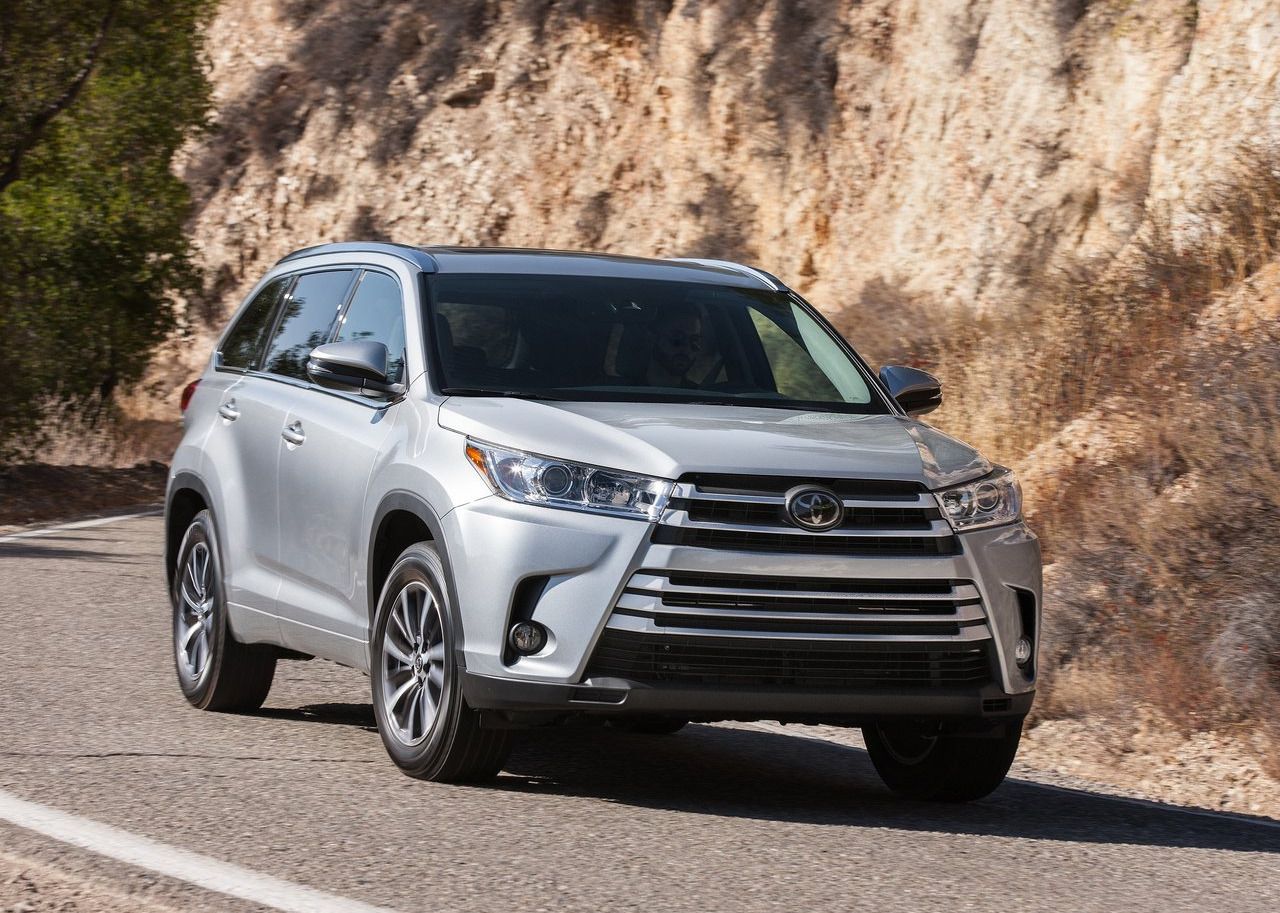
2017 Highlander.
Toyota Highlander (2017–2019) offers everything you expect from a Toyota: rock-solid reliability, family-friendly space, and excellent resale value. The V6 is smooth and dependable, and hybrid versions provide surprising efficiency for a midsize three-row. Many well-equipped trims may edge just above $30K, but older models in good shape are still accessible.
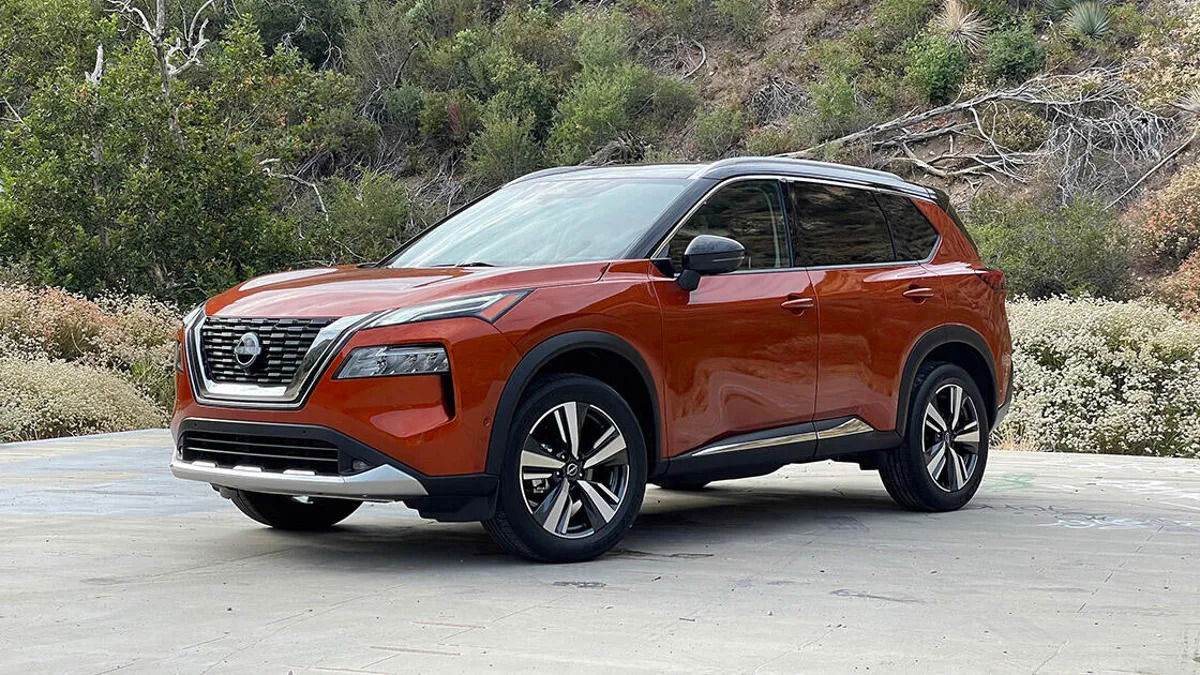
2022 Rogue.
Nissan Rogue (2020–2022) improved dramatically after its 2021 redesign. It now features a more upscale interior, better ride comfort, and enhanced safety tech. Though earlier Rogues struggled with transmission issues, post-2020 models fare much better and deliver impressive value.
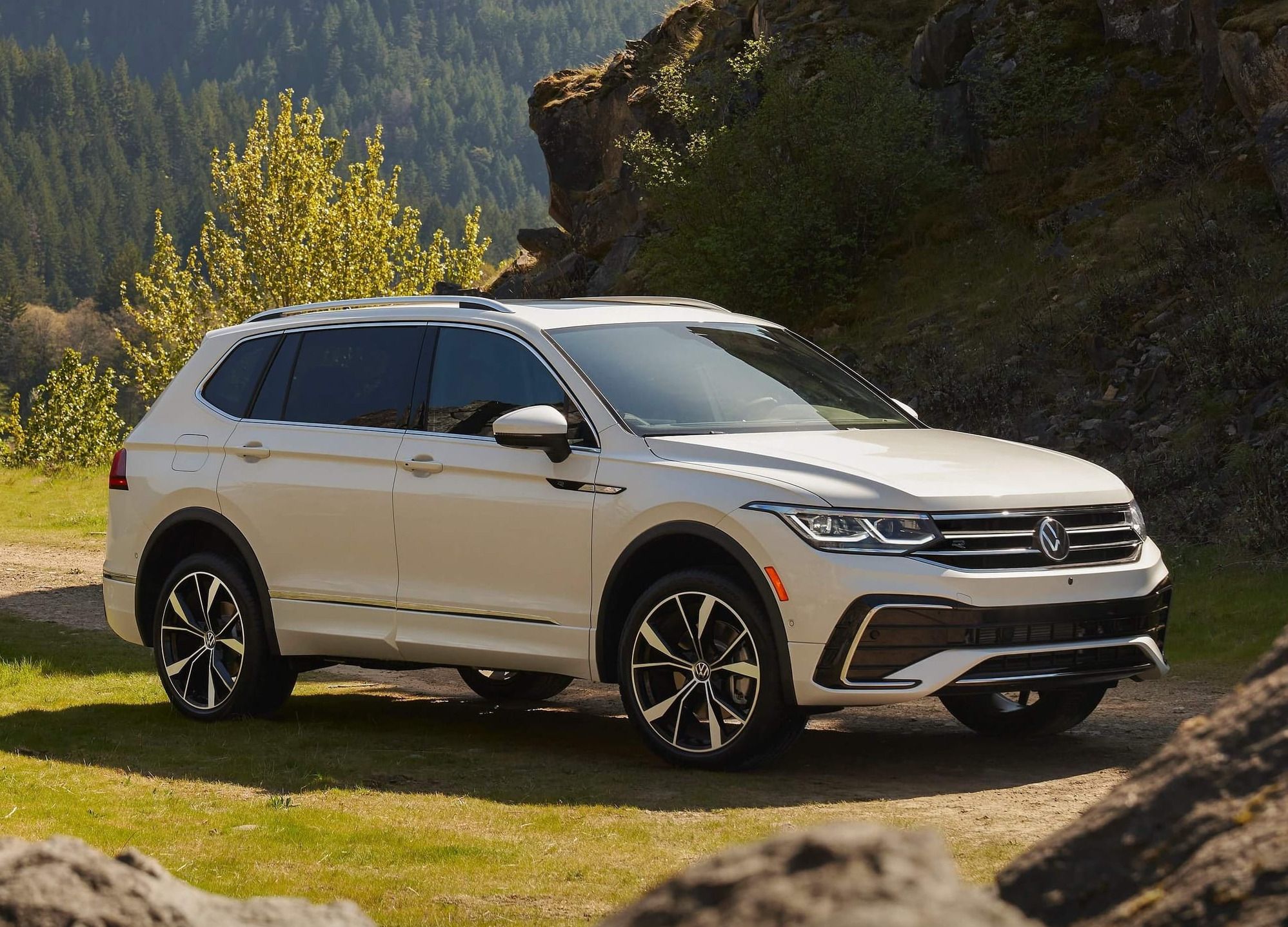
2022 Tiguan.
Volkswagen Tiguan (2020–2022) stands out with European styling, a composed ride, and available third-row seating. It’s not the most reliable in the bunch, but for those prioritizing tech features and upscale touches, it offers more than most in its class for the money.
Each of these earns a spot just outside the main rankings for blending practicality, comfort, and real-world value.
Best Used 3rd Row SUV Under $30,000
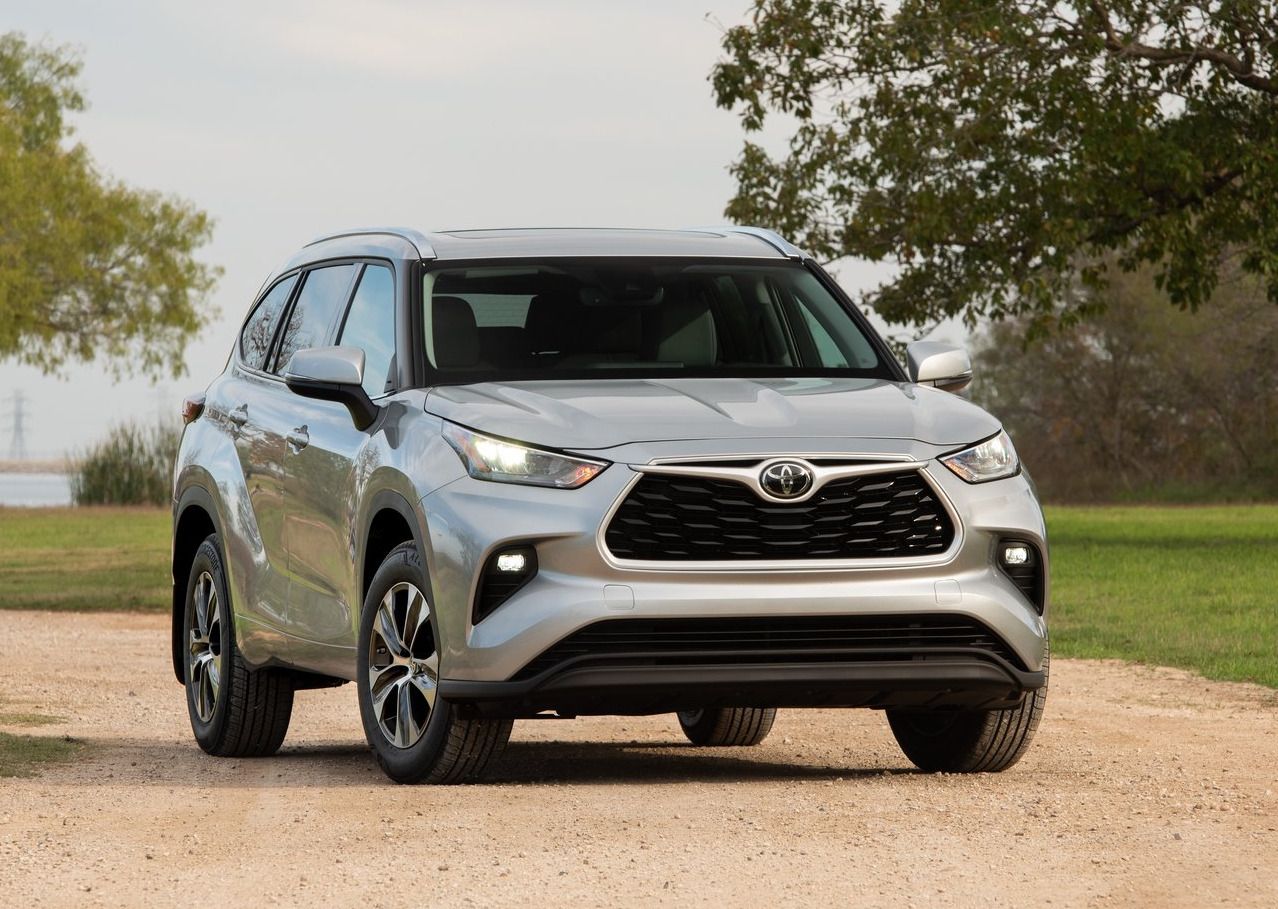
2019–2021 Toyota Highlander
The best used 3rd-row SUV under $30,000 in 2025 is the 2019–2021 Toyota Highlander. It strikes a rare balance between long-term reliability, daily practicality, and overall value that few other SUVs can match.
Known for its bulletproof dependability, the Highlander has a strong reputation for running well past 200,000 miles with minimal issues. It’s powered by a smooth V6 engine that delivers confident acceleration, or a highly efficient hybrid option capable of up to 36 miles per gallon—remarkable for a midsize three-row SUV.
While the third row isn't the roomiest in the class, it’s perfectly functional for kids or short trips with adults, and the second-row seats slide to make access easier. The Highlander comes with a high level of standard safety equipment thanks to Toyota Safety Sense and consistently earns top marks from both the IIHS and NHTSA.
Add in low maintenance costs, strong resale value, and a refined interior, and it becomes clear why this is the top choice for families shopping under $30K
Best Used Luxury SUV Under $30,000
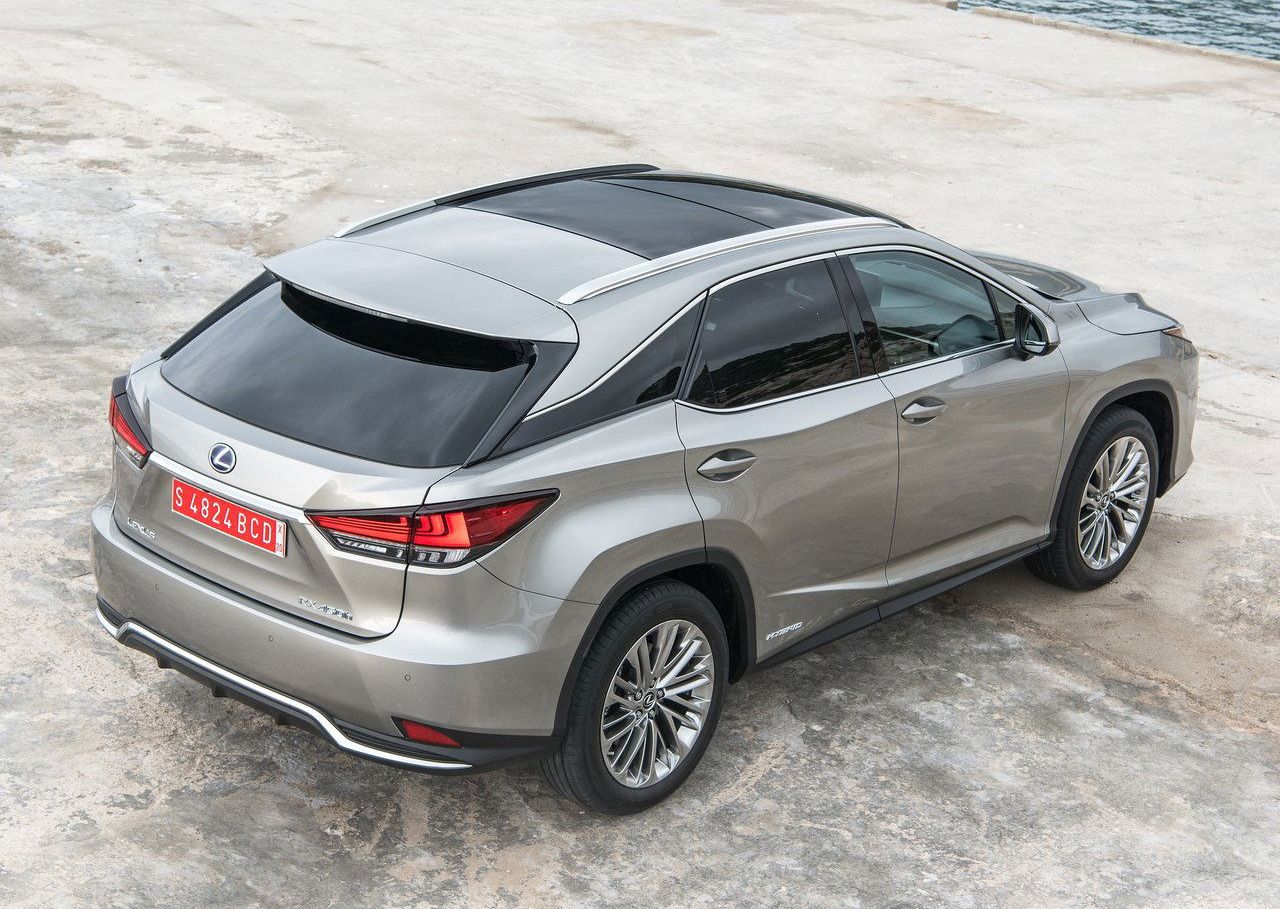
2018–2020 Lexus RX 350
The best used luxury SUV under $30,000 in 2025 is the 2018–2020 Lexus RX 350—and frankly, it’s not even a close race in terms of value, longevity, and cost of ownership.
While many luxury SUVs under $30K can feel like ticking time bombs with sky-high repair bills, the RX 350 is the opposite. It delivers all the hallmarks of a true luxury experience—refined cabin materials, quiet ride quality, and confident V6 performance—without the headaches that plague many European competitors.
Built on Toyota’s rock-solid engineering, it has one of the highest reliability ratings in the luxury class and is often driven well beyond 200,000 miles with minimal drama.
The 2018–2020 models include advanced driver-assistance features, user-friendly infotainment, and upscale interior styling that has aged gracefully. Even better, it retains strong resale value and has relatively low maintenance costs for a luxury vehicle.
For buyers who want a genuinely premium experience without sacrificing long-term peace of mind, the Lexus RX 350 is the smartest investment under $30,000.
Cheapest 3rd Row Used SUV
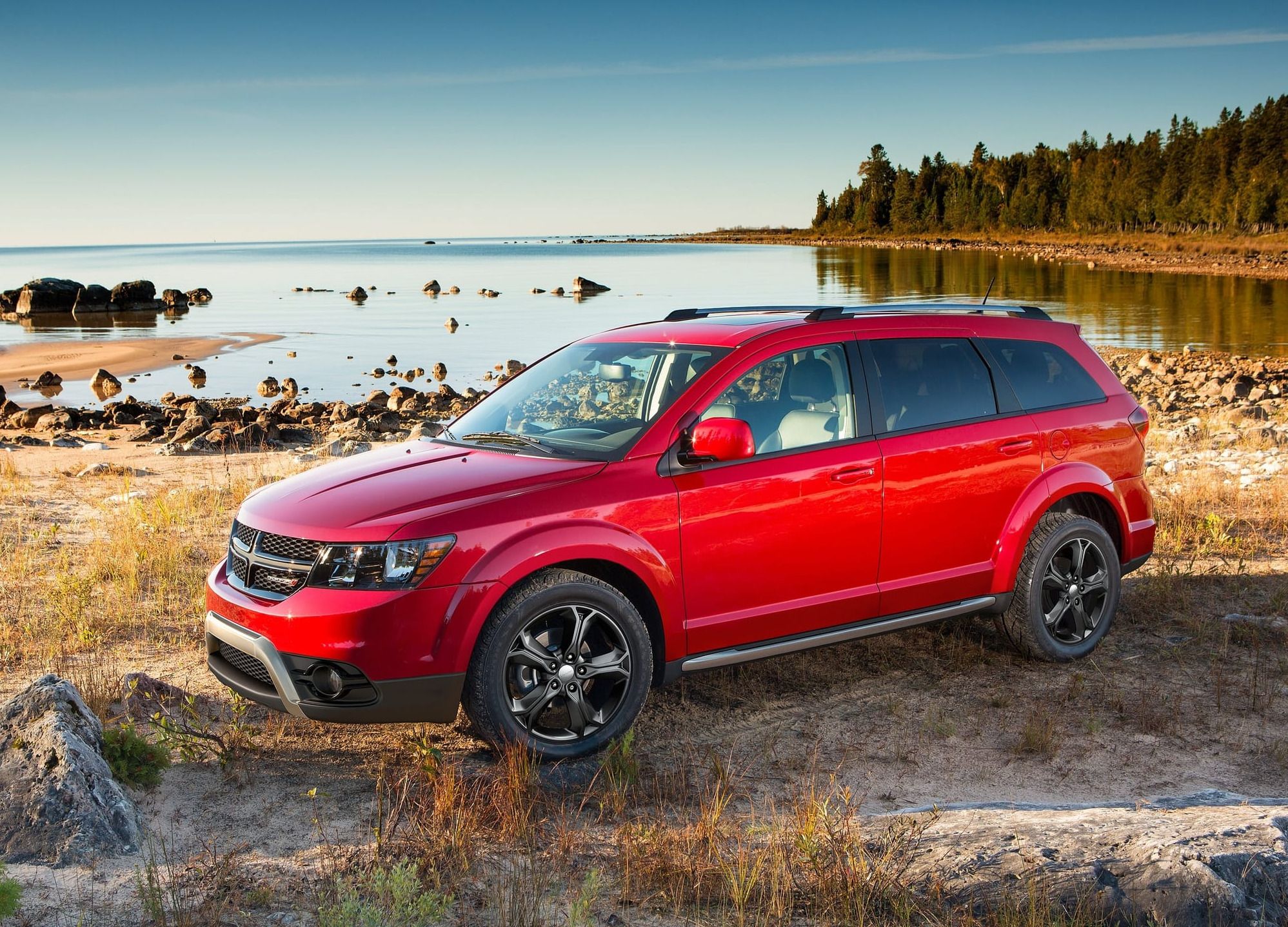
2012–2015 Dodge Journey
The cheapest 3rd-row used SUV that still offers decent reliability and practicality is the 2012–2015 Dodge Journey—often found for $6,000 to $10,000 on the used market.
That said, it’s important to go into this option with your eyes open. The Journey is one of the most affordable ways to get three rows of seating, but it's not a class leader in reliability or performance.
The 4-cylinder models are underpowered and often overworked, so it's best to look for the V6 version if you go this route. The interior is spacious enough for short trips with kids in the third row, though adults will find it cramped. Tech and safety features are basic, especially in earlier trims.
If you're on a shoestring budget and absolutely need a third-row SUV, the Dodge Journey fits the bill. But if you can stretch your budget slightly, models like the 2012–2014 Honda Pilot or Mazda CX-9 offer much better long-term value and durability for just a few thousand more.
Used SUV Buying Secrets: Insider Tips To Save Thousands
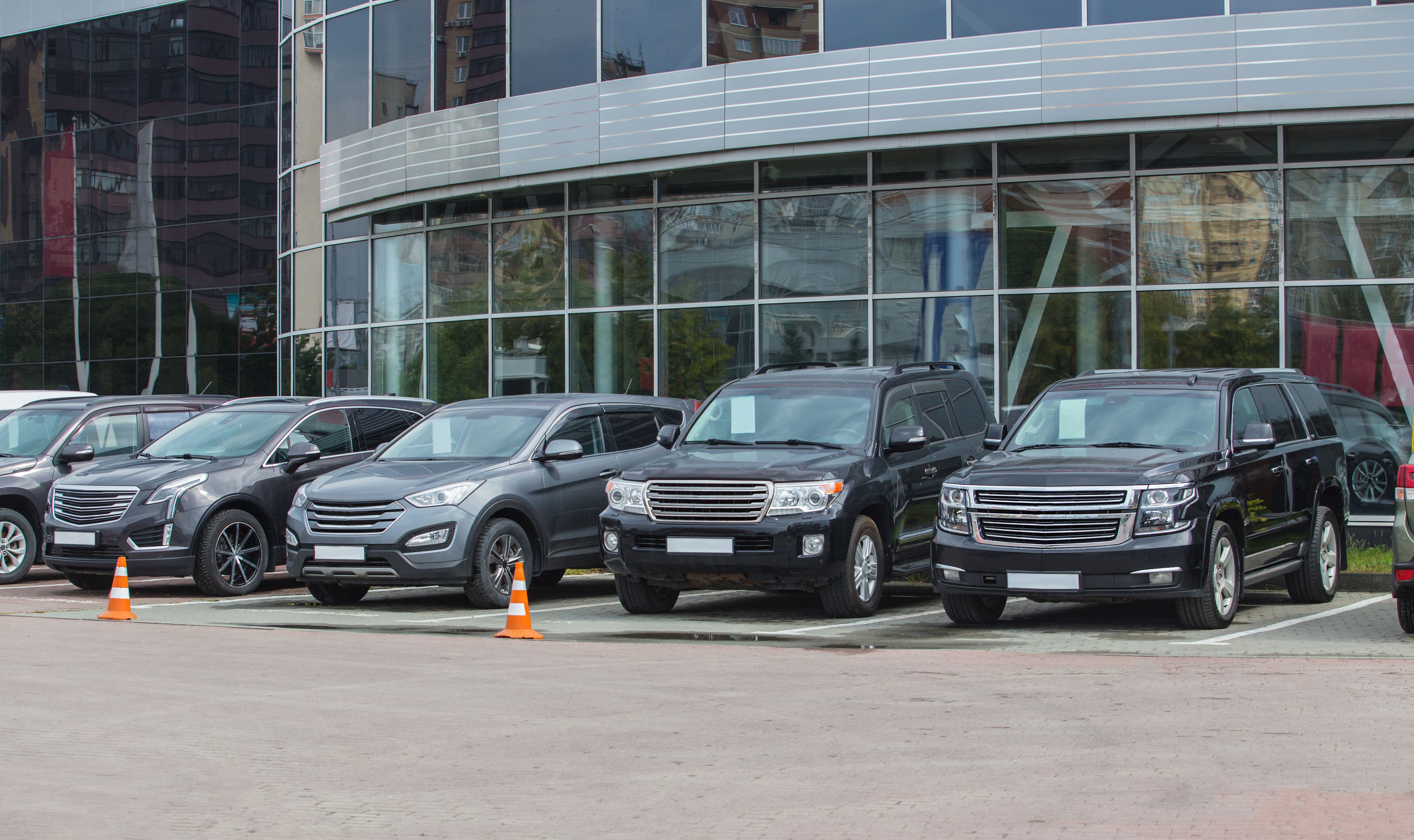
When shopping for a used SUV, everyone tells you to check the Carfax, get a mechanic’s inspection, and test drive thoroughly. Those are table stakes. But if you want an insider edge—secrets that seasoned car buyers, auction pros, and savvy dealership insiders know—you’ll need to dig deeper.
Here are some under-the-radar tips that could save you thousands and help you score the best used SUV under $30,000.
1. Time the Market Like a Pro
Most people shop for used SUVs in the fall and winter, assuming prices dip then. That’s partially true—but the real bargains often show up in late spring and early summer. This is when dealers aggressively clear older trade-ins to make room for new leases and incoming model-year updates.
If you’re buying from a private seller, post-tax season (April–May) is gold: many people offload their vehicles when they get tax refunds and are ready to upgrade.
2. Skip the Crowds—Target Off-Lease Hidden Gems
Everyone flocks to used Toyotas and Hondas, driving up prices. Instead, look for off-lease vehicles from brands like Buick, Mazda, or even Volkswagen. These SUVs often come back after 2–3 years in excellent condition, with lower mileage and full maintenance records.
They’re undervalued on the lot simply because of brand perception—not mechanical performance.
3. Expand Your Search: Location Is Everything
Used SUV pricing varies drastically by location. Most buyers only search within 50–100 miles of their home, but expanding your search to rural areas or lower-demand regions can yield significantly better deals.
A used Ford Edge in Kansas might sell for $2,000 less than the same one in San Francisco or Miami. Use online tools to cross-shop across zip codes.
4. Demand the Auction Report (Yes, You Can Ask!)
Many small dealerships buy their vehicles at wholesale auctions. What they don’t advertise is that these vehicles often come with auction condition reports, grading the car’s cosmetic and mechanical condition before purchase.
A well-informed buyer can politely ask to see this report—if they’re transparent, they’ll show it to you. This can reveal hidden issues or reassure you that the SUV was top-rated.
5. Rainy Days & Holiday Weekends = Bargain Power
It sounds strange, but buying on rainy days or during holiday weekends—especially when rain falls on a Monday—can work in your favor.
Fewer buyers show up, giving you leverage. Salespeople are also trying to hit end-of-day or end-of-event quotas, making them more likely to shave off that extra $500 to close the deal.
6. Decode the Tires & Window Sticker for Hidden Clues
Dealers often don’t rotate tires or replace them unless they’re visibly bald. But mismatched tire brands, especially on AWD SUVs, may hint at uneven wear or lazy maintenance.
Also, check for factory window sticker codes still in the glove box or online using the VIN—these can tell you which packages or options the vehicle originally came with, some of which boost value or performance far beyond what’s listed in the ad.
Used SUV shopping doesn't have to be a gamble. With a few insider tricks, you can tilt the odds—and the price—in your favor.
Used SUV Inspection Checklist
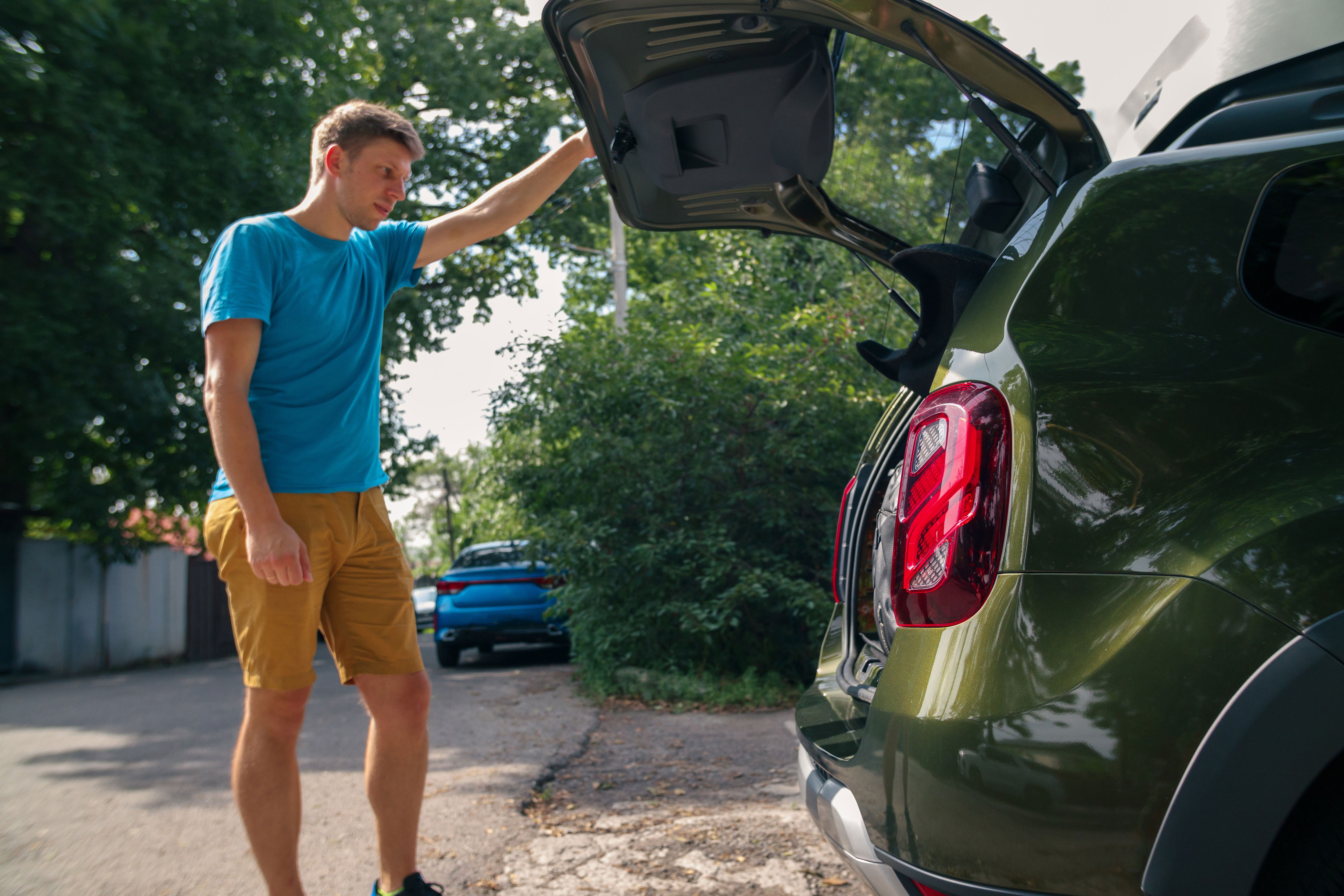
When inspecting a used SUV, most checklists repeat the same surface-level advice: look for rust, check tire tread, test the lights. That’s basic. If you’re serious about getting a high-quality SUV and avoiding hidden money pits, you need to dig deeper—like a dealer prepping it for auction or a sharp-eyed inspector with nothing to prove.
Here’s a refined checklist of little-known inspection tips that can uncover costly issues before they’re yours to fix.
Start with the Tires—but Not for the Usual Reasons
Most people check for tread depth, but few inspect uneven wear patterns. If the inside edge of the front tires is significantly more worn than the outside, it may point to a bad alignment or worn suspension components.
AWD SUVs with mismatched tire brands or uneven tire sizes are a huge red flag—these systems rely on synchronized rotation, and mismatches can ruin expensive components like the transfer case or rear differential.
Open the Hood—Then Let the Car Idle
Everyone pops the hood, but most buyers do it with the engine off. Instead, start the vehicle and let it idle for a few minutes while observing under the hood. Look for subtle engine shakes, ticking sounds, or rhythmic vibrations.
Lightly rest your hand on the engine cover—if it feels like it’s misfiring or stumbling slightly, you could be dealing with ignition or fuel system issues not yet severe enough to trigger a check engine light.
Scan the Door Hinges and Bolts
Examine the door hinges, hood bolts, and tailgate screws for signs of tool marks or paint mismatches. These can indicate past bodywork, even if the car wasn’t reported as an accident.
Look especially at bolt heads—if the paint is chipped or uneven around them, it suggests the panel may have been removed or replaced.
Inspect the Underside of the Oil Cap and Coolant Tank
Most people check the oil dipstick, but go a step further—remove the oil cap and look underneath for milky sludge, a sign of coolant mixing with oil, which could indicate a failing head gasket.
Also, peek inside the coolant overflow tank; it should be clean, brightly colored, and free of rust or oily residue.
Sniff the Transmission Fluid
If possible, pull the transmission dipstick and smell the fluid. Burnt-smelling fluid suggests overheating or neglect. A healthy automatic transmission fluid should be pinkish or reddish and free of debris.
Test the HVAC and Cabin Systems in Detail
Don’t just check if the air blows hot or cold. Flip through every fan setting, vent mode, and recirculation option. Many modern SUVs use blend doors controlled by actuators, and failure is common but often ignored.
If the air doesn’t change direction or temperature properly, those actuators could be failing—a repair that requires disassembling part of the dash.
Final Secret Move: Check the VIN for Original Options
Using the VIN, run it through the automaker’s site or a detailed VIN decoder. This reveals factory-installed options, letting you confirm if the vehicle has the original trim-level features or if something’s been swapped or removed.
This deeper-level inspection doesn’t take much longer, but it can save you from buying a problem disguised as a bargain.